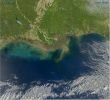These following facts about Mt. Vesuvius should expand your knowledge about about this mountain. As you know, Mount Vesuvius is a stratovolcano in the Gulf of Naples, Italy, about 9 kilometers east of Naples and a short distance from the shore. This mountain is one of several volcanoes which form the Campanian volcanic arc. It also consists of a large cone partially encircled by the steep rim of a summit caldera caused by the collapse of an earlier and originally much higher structure. Have you ever visited this mountain? If you haven’t, then these facts about Mt. Vesuvius will show you what it has.
Facts about Mt. Vesuvius 1: Eruption
When Mount Vesuvius erupted in AD 79 burying the Roman cities Pompeii and Herculaneum, it spewed 1.5 million tons lava per second. It was like shooting out 250 000 fully grown elephants each second and letting them fall through the air.
Facts about Mt. Vesuvius 2: Mythology
Vesuvius has a long historic and literary tradition. It was considered a divinity of the Genius type at the time of the eruption of 79 AD: it appears under the inscribed name Vesuvius as a serpent in the decorative frescos of many lararia, or household shrines, surviving from Pompeii.
Facts about Mt. Vesuvius 3: Hiroshima Bombing
The eruption released a hundred thousand times the thermal energy released by the Hiroshima bombing. An estimated 16 000 people lost their lives.
Facts about Mt. Vesuvius 4: Origin of the Name
Vesuvius was a name of the volcano in frequent use by the authors of the late Roman Republic and the early Roman Empire. Its collateral forms were Vesaevus, Vesevus, Vesbius and Vesvius.
Facts about Mt. Vesuvius 5: Another Eruptions
Vesuvius has erupted many times since then. On April 7, 1906 it ejected more lava than ever and killed 100 people. The last major eruption in March 1944 destroyed four villages.
Facts about Mt. Vesuvius 6: Precursors and Foreshocks
The 79 AD eruption was preceded by a powerful earthquake seventeen years beforehand on February 5, AD 62, which caused widespread destruction around the Bay of Naples, and particularly to Pompeii.
Facts about Mt. Vesuvius 7: “Plinian”
Volcanologists have adopted the term “Plinian” from Vesuvius to describe large volcanic eruption clouds. This is due to Pliny the Younger, who described the 79 AD eruption as a tall, “umbrella pine” shaped cloud that rose above the volcano.
Facts about Mt. Vesuvius 8: Casualties
Along with Pliny the Elder, the only other noble casualties of the eruption to be known by name were Agrippa and his wife. An estimated 16,000 citizens in the Roman vicinities of Pompeii and Herculaneum perished due to hydrothermal pyroclastic flows.
Facts about Mt. Vesuvius 9: Andesite
Most rocks erupted from Vesuvius are andesite. Andesite lava creates explosive eruptions, which makes Vesuvius especially dangerous and unpredictable.
Facts about Mt. Vesuvius 10: Vesuvius Today
The area around Vesuvius was officially declared a national park on June 5, 1995. The summit of Vesuvius is open to visitors and there is a small network of paths around the mountain that are maintained by the park authorities on weekends.
Those following facts about Mt. Vesuvius may probably expand your interest on studying this mountain. It erupted many times and was always regarded as one of the most dangerous volcanoes in the world. The danger is not due to the immediate risk of a sudden deadly explosion, but to the density of the population living in nearby Naples. Hope these Mt. Vesuvius facts would be really interesting and useful for you to read.










 www.PortlandPayday.Loans
www.PortlandPayday.Loans